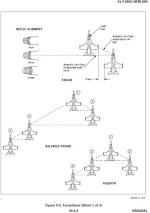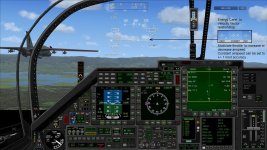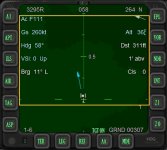PhantomTweak
Members +
Does this help at all for the formation flying? It's for the F/A-18, but should be adaptable to nearly any plane easily...
That IS from the real life F/A-18 A/B/C/D NATOPS, so it's what the US Navy really uses. I can post a few more pages, including the text from the NATOPS, and what other pictures there are, if you want.
Notice how everyone in the formation is flying only off the Lead plane. Stay focused on him ONLY. Constantly. Keep a good scan pattern, but when you're outside, ONLY look at Lead.
Very, VERY small throttle adjustments. Same for the stick. VERY small movements. Easiest if your controller's null zones are set to 0, or nearly so. Lets you make the tiny adjustments needed.
Formations this tight are normal Navy procedure, but ONLY in VFR conditions. If you can't see the lead well enough, the formation may either expand greatly, like to an eye-ball/shooter formation if dash-2 has a good radar lock on Lead, or even break up. Say Lead goes up 500' and dash-2 goes down 500', and dash-2 takes a 10° course change away from lead's course for 1 minute. Just for example, but you get the idea.
Dark, moonless/horizonless nights are an entirely different animal. Beware you don't fly formation on a star, or try to join up on a streetlight! When in doubt, at least in MP, you can always call "Christmas Tree" to have lead turn on all his external light bright, so hopefully you can see him. And bear in mind, your Radar is your friend!
I think I can dig up the download location for this, and a lot of other, NATOPS, as well as numerous Navy and various other service pubs.
Good luck!
Pat☺






 Thanks, Pat.. I was looking for that a couple of days ago. As previously noted, all of the other links seemed dead. Appreciate the link... works great. Terry
Thanks, Pat.. I was looking for that a couple of days ago. As previously noted, all of the other links seemed dead. Appreciate the link... works great. Terry

